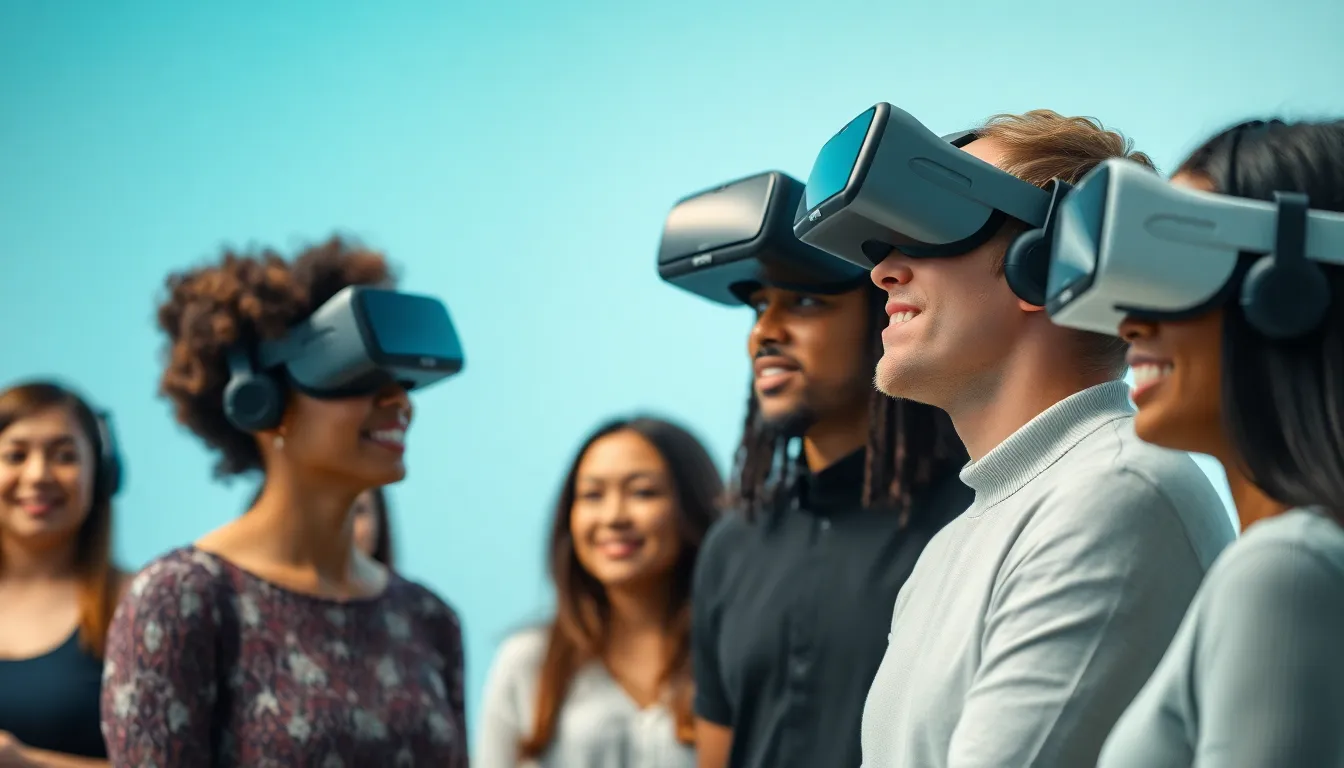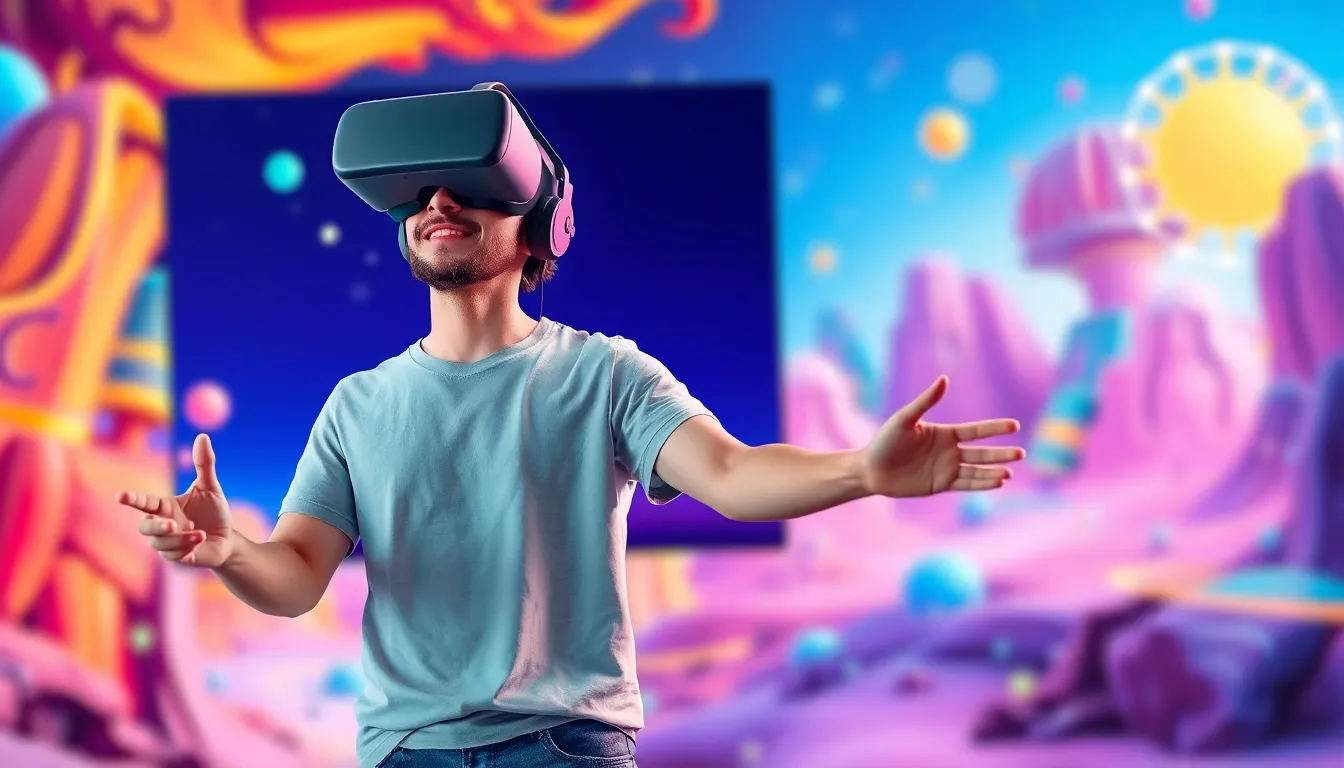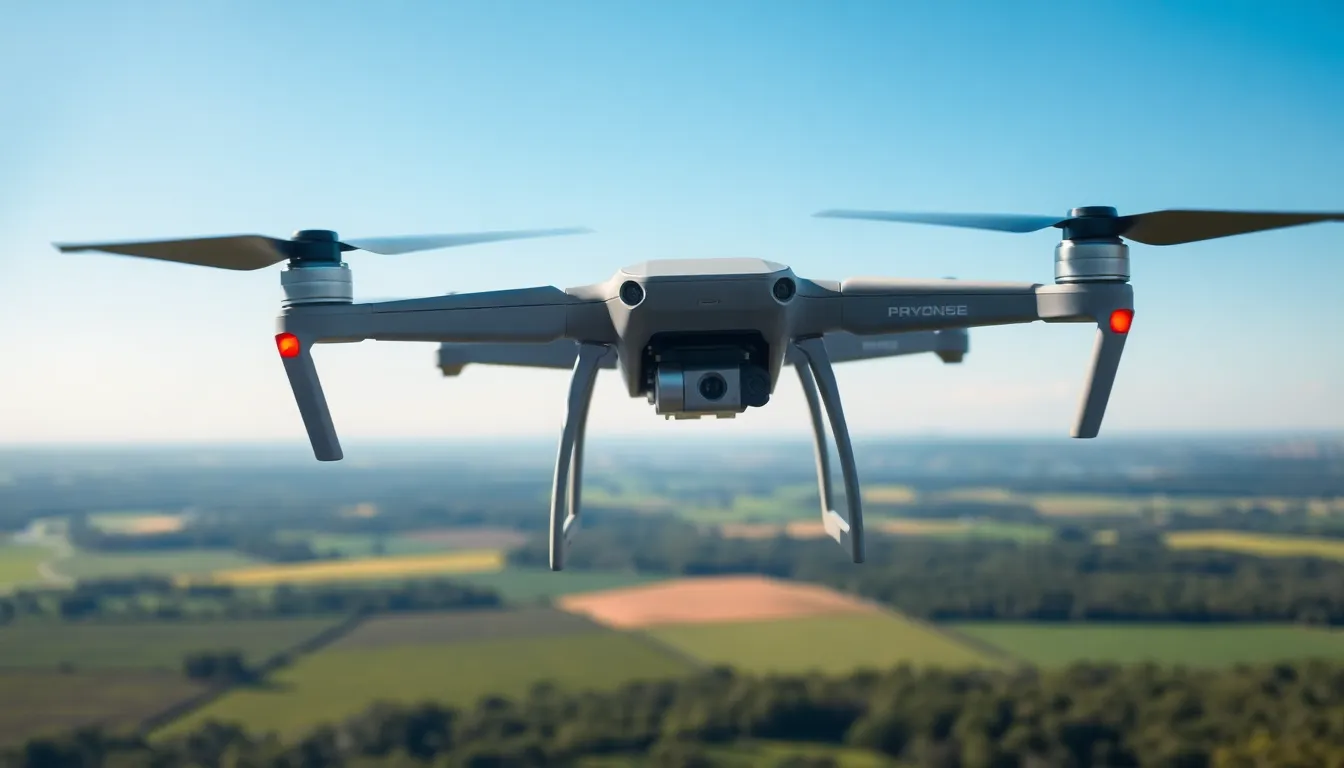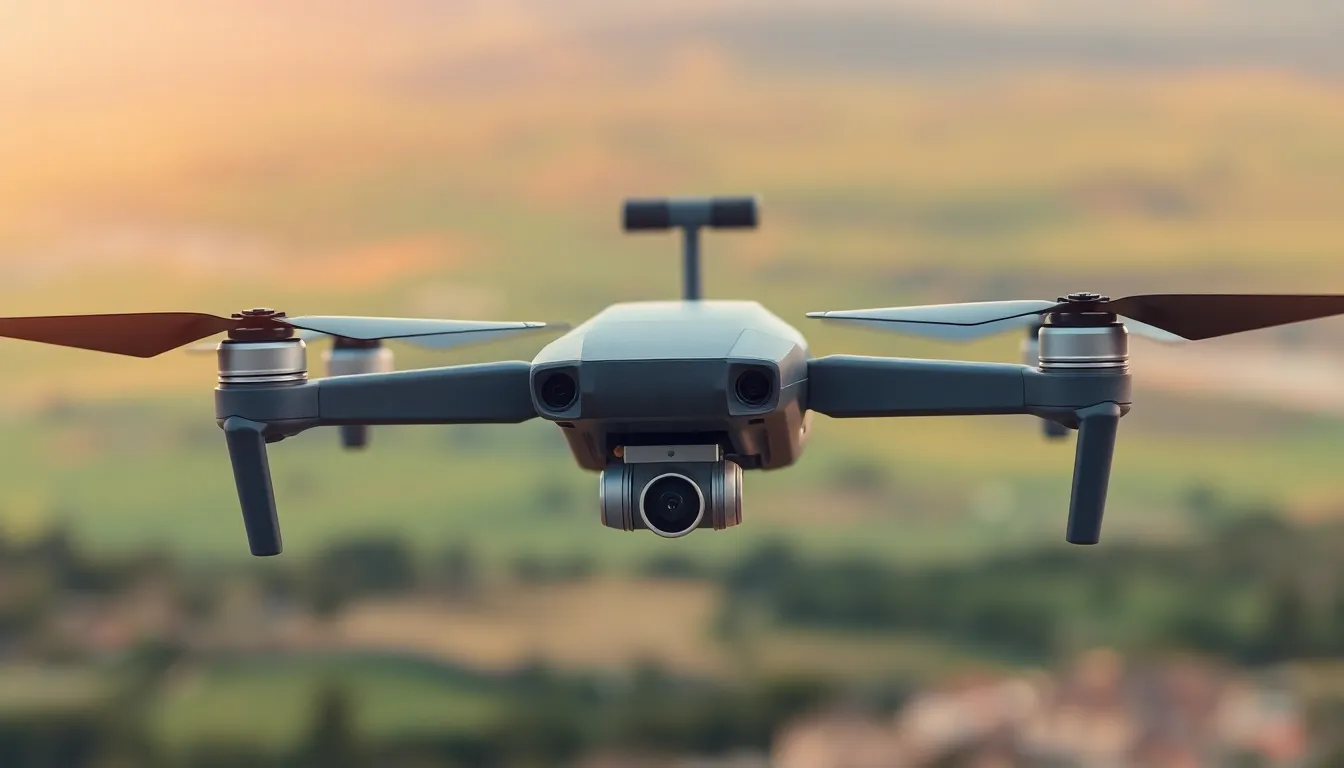Imagine stepping into a virtual world where your avatar not only looks like you but also has the charm and wit of your favorite comedian. AI avatars in VR are transforming how people interact, play, and connect in immersive environments. Gone are the days of awkwardly navigating virtual spaces as a blocky figure; now, you can embody a digital version of yourself that’s as expressive as you are—minus the bad hair day.
Table of Contents
ToggleOverview of AI Avatars in VR
AI avatars in virtual reality represent a significant advancement in technology that enhances user experience. They respond intelligently to user actions, creating a seamless interaction within virtual environments. These digital representations not only imitate physical features but also capture emotional nuances.
Users can now create customized avatars that embody their personality traits. The complexity of AI algorithms allows these avatars to learn from user interactions, adapting to individual preferences over time. This capability transforms user engagement, bringing a greater sense of presence and identity into virtual spaces.
Various industries leverage AI avatars to improve communication in virtual meetings, gaming, and social experiences. For instance, educational platforms utilize avatars to facilitate interactive learning environments. Healthcare providers employ them to simulate patient interactions, which aids in training professionals.
Specific technologies drive the development of these avatars, including machine learning and natural language processing. These technologies enable realism and responsiveness, allowing avatars to understand and react to user input in real time. As a result, users enjoy personalized experiences during interactions.
Investments in AI avatar technology continue to rise as companies recognize the potential of virtual reality. Market research indicates that the demand for engaging virtual experiences grows rapidly, leading to more innovation in avatar development. Current trends suggest that future advancements will further blur the lines between reality and virtual creations.
The Technology Behind AI Avatars

AI avatars utilize advanced technologies to enhance virtual reality experiences. These avatars adapt to users’ preferences and enable seamless interactions in immersive environments.
Machine Learning and Personalization
Machine learning plays a crucial role in the development of AI avatars. It allows avatars to learn from user interactions, creating a personalized experience. Users can modify their avatars to reflect unique personality traits. Data collection from interactions enables continuous improvement. Over time, avatars become more attuned to individual preferences, enhancing user satisfaction. This personalization feature makes conversations more engaging and relatable in VR.
Natural Language Processing Capabilities
Natural language processing (NLP) enhances the ability of AI avatars to understand and respond to user communication. NLP enables avatars to interpret user input accurately, whether spoken or typed. Real-time conversation capabilities create a more natural interaction flow. Additionally, contextual understanding allows avatars to grasp nuances in language and emotions. Users benefit from more meaningful exchanges, driving deeper engagement and connection in virtual spaces. As NLP technology evolves, the realism and effectiveness of AI avatars improve significantly.
Applications of AI Avatars in VR
AI avatars enhance various sectors through their intuitive functionalities. These digital representations offer immersive experiences that engage users on multiple levels.
Gaming and Entertainment
Gaming exploits AI avatars to create lifelike characters. Players interact with personalized avatars that respond to in-game actions. Emotional expressions enhance storytelling, making experiences more engaging. For instance, NPC (non-playable character) interactions become dynamic, creating vibrant gameplay. As gaming technologies evolve, developers integrate advanced AI to improve avatar realism and responsiveness. Enhancing gameplay encourages longer engagement times, resulting in increased player satisfaction.
Education and Training
In education, AI avatars act as tutors and guides. These avatars facilitate personalized learning experiences, addressing individual student needs. Interactive sessions ensure that learners grasp complex concepts more easily. For example, medical training programs use AI avatars to simulate patient interactions, allowing students to practice skills in a risk-free environment. Continuous feedback from avatars aids learners in tracking their progress, improving educational outcomes.
Social Interaction and Collaboration
AI avatars also optimize social interactions and collaboration. Virtual meetings using AI-enhanced avatars foster engaging discussions and teamwork. They mimic users’ facial expressions and body language, making communication more effective. Such avatars personalize remote collaborations, bridging the gap between physical and virtual interactions. Companies benefit from increased productivity and creativity in brainstorming sessions. As these AI avatars advance, they further enhance how individuals connect, regardless of physical distance.
Benefits of Using AI Avatars in VR
AI avatars significantly enhance virtual experiences by bringing depth and realism to user interactions. Users enjoy more immersive and personalized environments through these digital representations.
Enhanced User Experience
AI avatars create a more engaging user experience by mimicking human-like responses. They respond to user actions and emotions intelligently, making interactions feel natural. Personalized avatars showcase individual traits, allowing users to express themselves fully. Enhanced realism comes from the avatars’ ability to recognize and adapt to users’ needs. Gamers, for instance, benefit from lifelike interactions that improve playability. In educational settings, AI avatars personalize learning by providing tailored support. Furthermore, realistic avatars boost engagement, promoting deeper connections in online communities.
Increased Accessibility
AI avatars foster inclusivity in virtual environments. These avatars can represent diverse identities, accommodating various users and their preferences. Accessibility options, such as voice recognition and text-to-speech features, support users with disabilities. Additionally, AI avatars break down language barriers through translation capabilities, enabling global communication. Emotional intelligence allows avatars to respond appropriately, helping users feel understood and supported. For businesses, inclusive virtual spaces enhance collaboration by ensuring everyone can participate fully. As accessibility improves, virtual reality experiences become more welcoming for a broader audience.
Challenges and Limitations
AI avatars in VR face several challenges and limitations that impact their effectiveness and acceptance in various applications.
Ethical Considerations
Ethics plays a pivotal role in the development of AI avatars. Concerns arise around privacy, as these avatars often collect sensitive user data to enhance personalization. Issues related to consent are significant; users must understand how their data is used and stored. Additionally, representation in virtual spaces remains a critical topic, as misrepresentation can lead to stereotyping and create negative experiences. The bias present in AI algorithms impacts the authenticity of avatar behavior, leading to potential miscommunication with users. Addressing these ethical dilemmas is essential for fostering trust and ensuring equitable experiences for all users.
Technical Constraints
Technical limitations significantly hinder the full potential of AI avatars. Processing power plays a key role; without sufficient resources, real-time interactions may lag, reducing immersion and realism. Avatars often struggle with accurately interpreting complex human emotions, which can create misunderstandings in communication. Additionally, compatibility with various VR platforms poses a challenge, as not all systems support advanced AI capabilities. Customization options may be limited, restricting users’ ability to create fully personalized representations. These technical constraints impact user experience and limit the widespread adoption of AI avatars in VR settings.
AI avatars in virtual reality are revolutionizing how users interact and engage within digital spaces. Their ability to adapt and respond to individual preferences fosters a more personalized experience. As technology continues to advance, these avatars will likely become even more realistic and effective in mimicking human interactions.
The potential applications across various industries highlight their versatility and importance. However, addressing ethical concerns and technical limitations remains crucial for broader acceptance. By overcoming these challenges, AI avatars can truly enhance virtual experiences, making them more inclusive and engaging for everyone. The future of AI avatars in VR is promising, paving the way for deeper connections and more immersive experiences.




